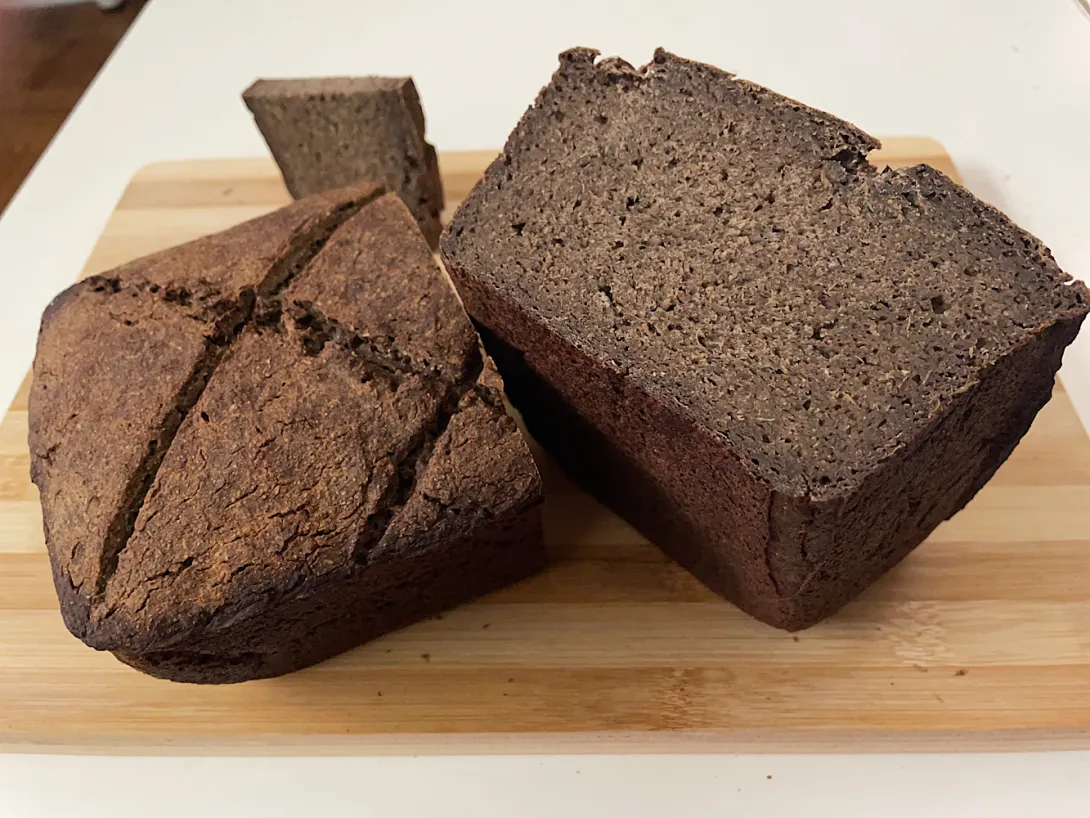
Inspiration for A 100% Buckwheat Borodinsky
Dark buckwheat and dark rye are easy for some of us to confuse in a bulk food store particularly when we're masked up and only half paying attention. So what happens when you load up on dark buckwheat in your basket and then realize what you've done? They share some characteristics such as low usable gluten and gellability using scalds. So, why not try using buckwheat in some rye recipes? Since my mind is always playing around with things to see what happens, this seemed like a fun little adventure.
Changes from Borodinsky Recipe
I have previously made Borodinsky using the Rye Baker's recipe. I again relied on that recipe with the following tweaks:
I used 11g of unfed rye sour (really unfed, like weeks in the fridge after my previous baking binge)
I replaced all rye flour with dark buckwheat flour
- I replaced 4g caraway/anise spice with 26 g black sesame toasted and ground
- I used my homemade rye solod in place of the rye malt
I replaced sugar with honey
- I added 3g diastatic rye malt to the final mix due to concerns about fermentation speed
- when the 40-minute bulk ferment showed little progress, I extended it to 6 hours
Process of Making the Bread
Here I toast black sesame and homemade solod. These will be the "spice" flavours for the bread.
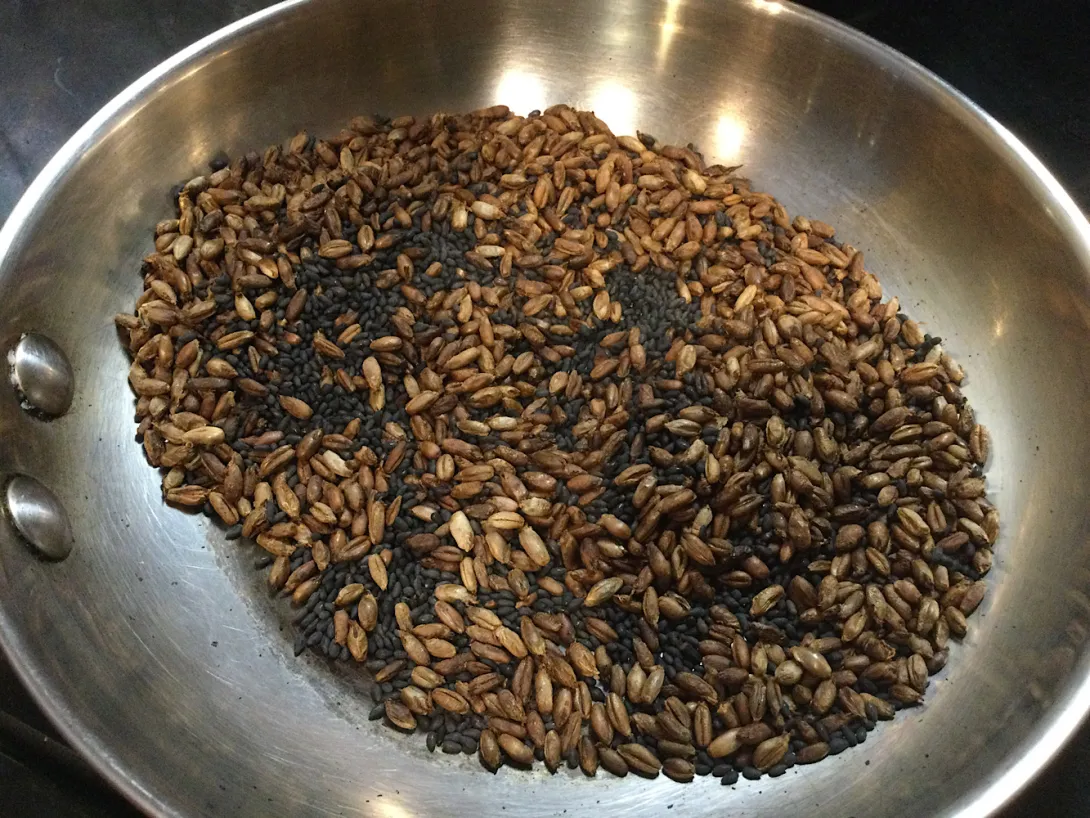
Here I am assembling the scald... flour, ground solod, ground black sesame...
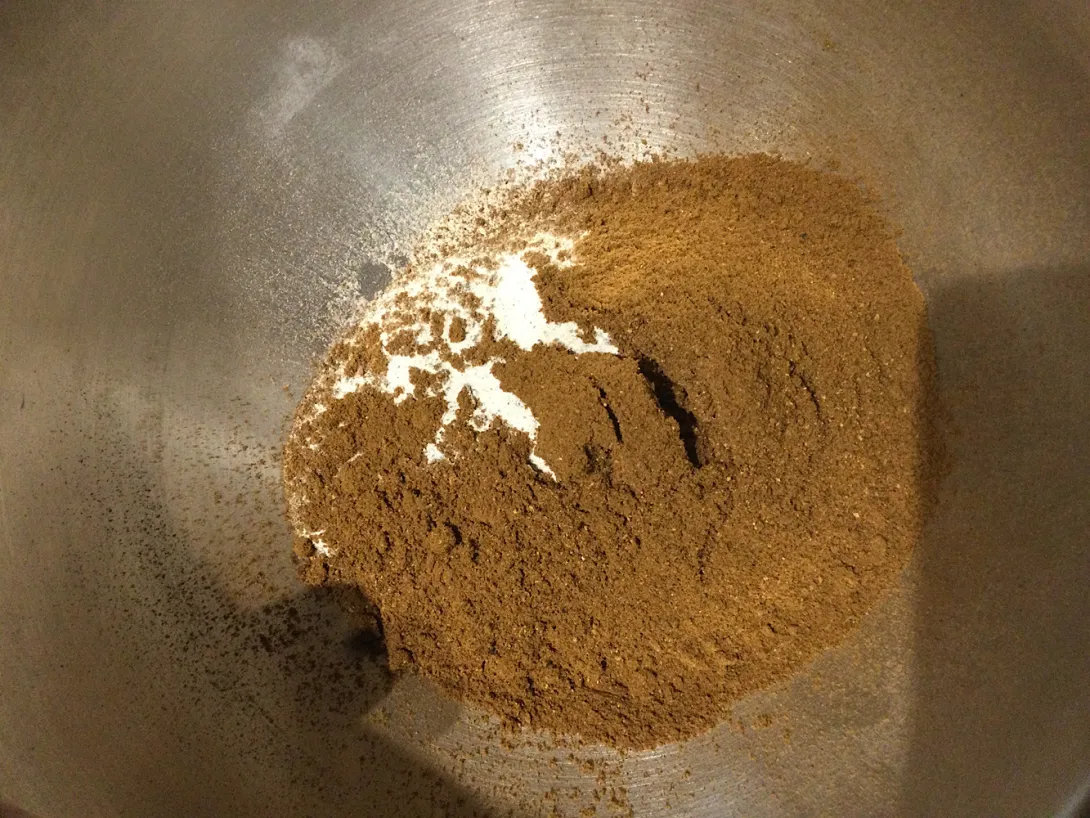
So, I left the levain out all night. I placed the scald in my proof box at 55c all night.
The next morning, the two items bore no resemblance to their rye versions.
The levain was not visibly fermenting. The scald was not a loose porridge. Both seemed a bit stiff still. I resigned myself to failure at that point. However, I decided to mix them up and let them sit for 6 hours as per the recipe.
Here you can see the result... it did not puff up smoothly like the rye version. Instead, it kind of puffed and cracked instead. I decided to keep going and see what happened.
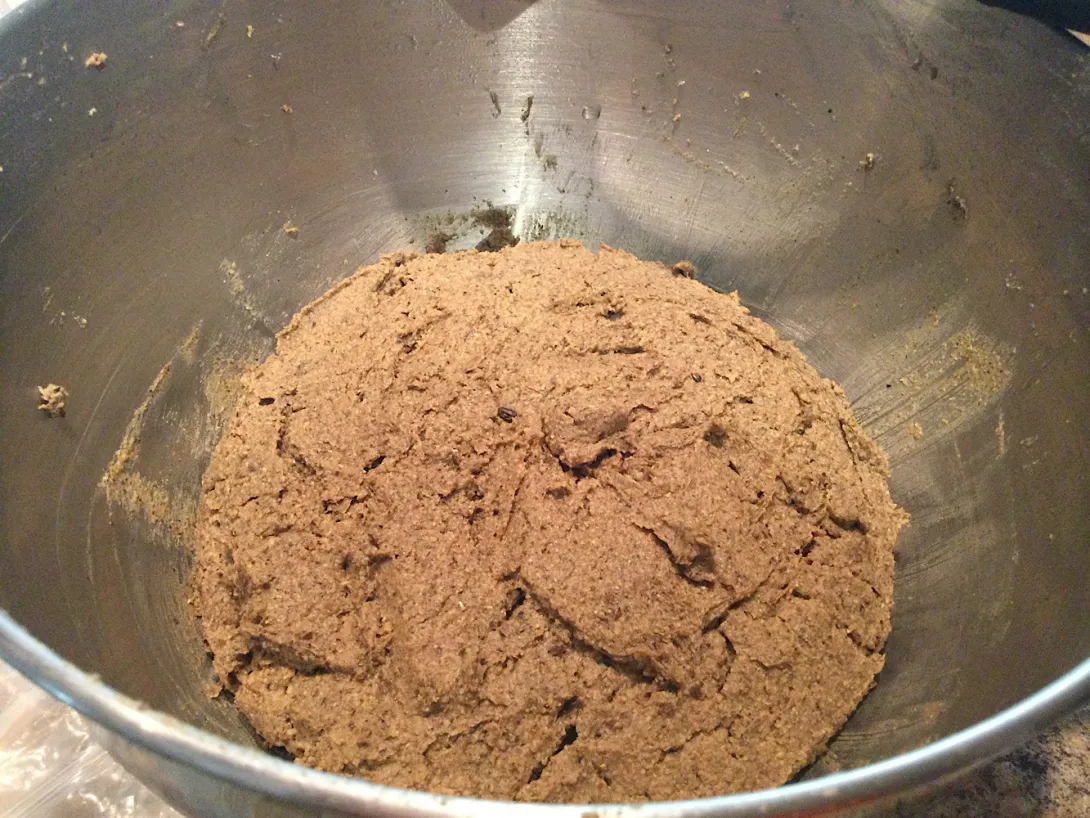
Making the final dough... throwing in all that buckwheat and wondering whether it will work.
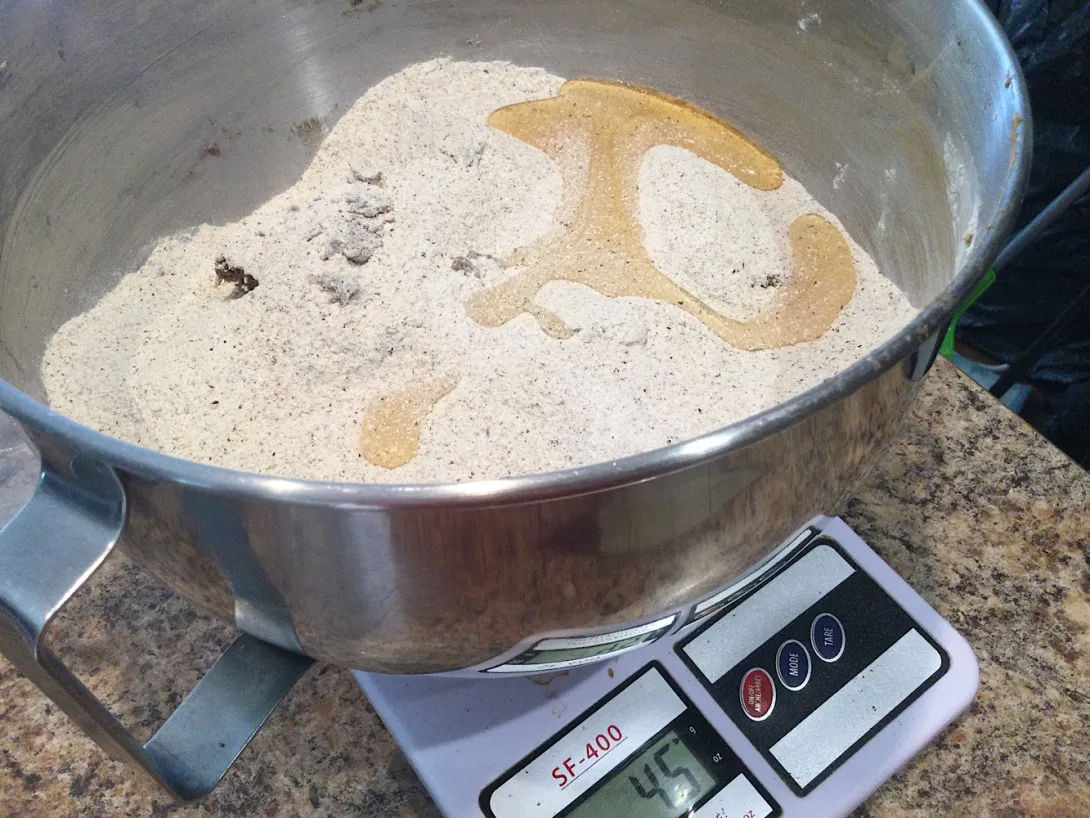
Here is the final dough ready for fermentation. To make it easier to detect change, I smoothed it with wet hands. Now that I am writing this, I think some of you sift flour over top and look for cracks... that might be easier!
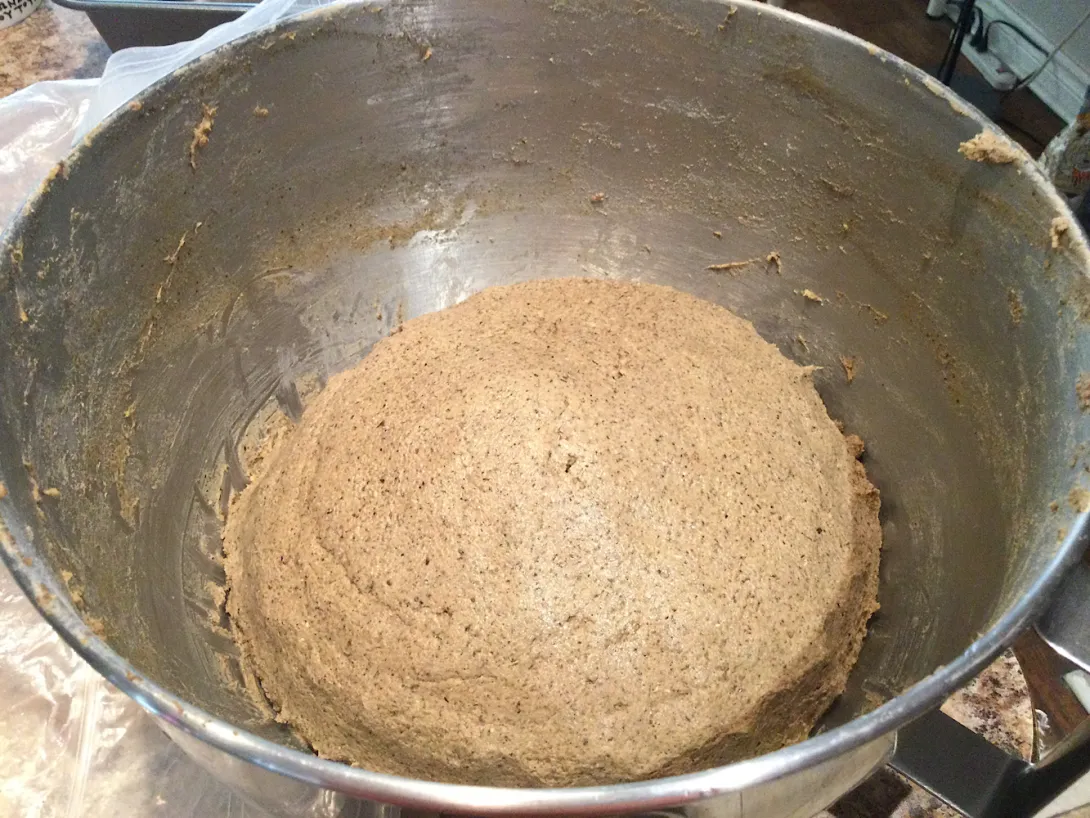
Not much happened in 40 mins... so I let it go 6 hours. Yup. It was 1030 at night by this time. Again, you can see cracks, which I took to mean progress.
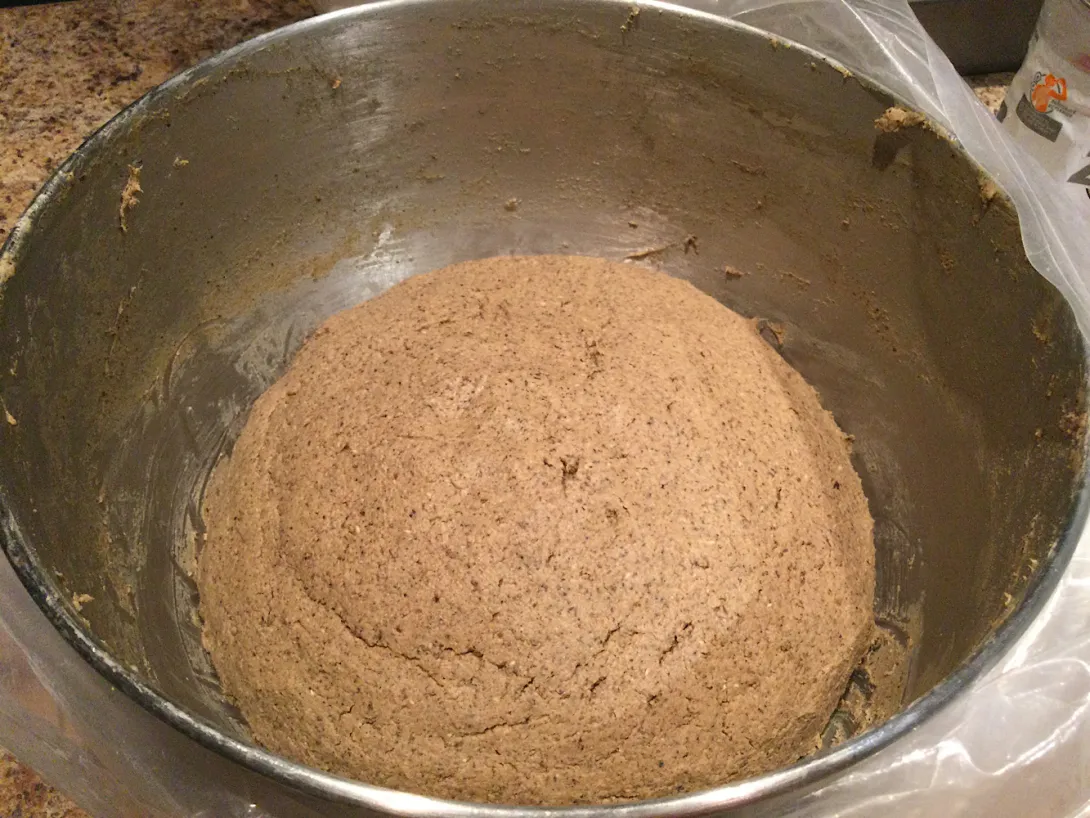
Here I've panned the dough and smoothed the top. My expectations were low... it was late and after a long day I was tired and needed sleep. However, curiosity kept me pushing it along.
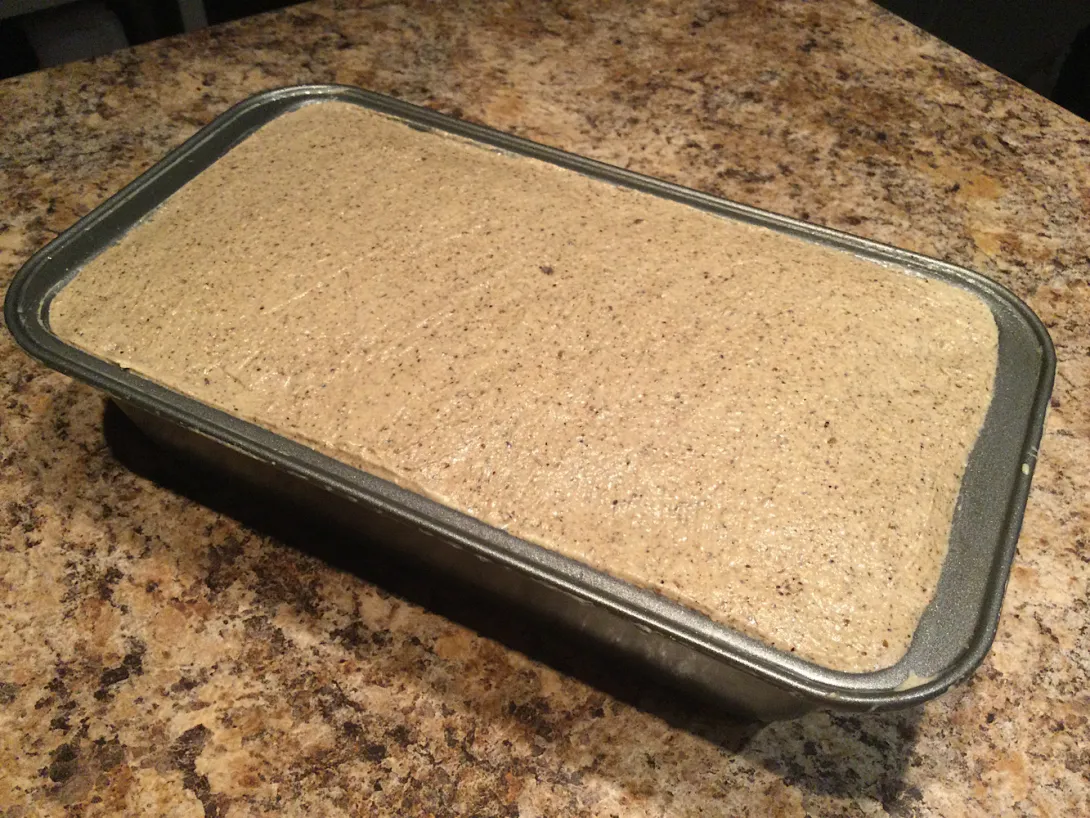
After the same amount of recipe time, I was delighted to see the dough puffing above the rim of the pan! Maybe this was going to work after all. I wasn't sure how far to let it go. I saw some evidence of pinholes and it was getting quite late... or early next morning? so I decided to bake.
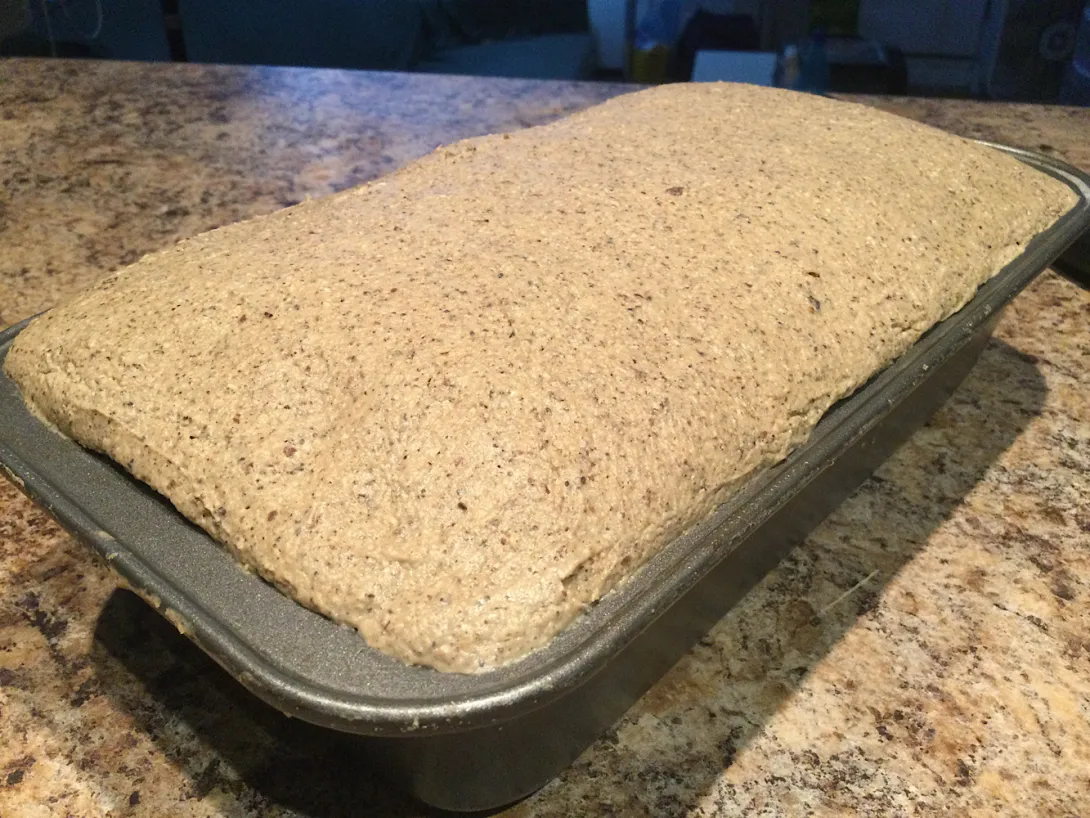
Here's the loaf out of the oven. Was it a brick? I'd have to wait. I wrapped it in a towel and put it on a cooling rack while I stumbled off to bed.
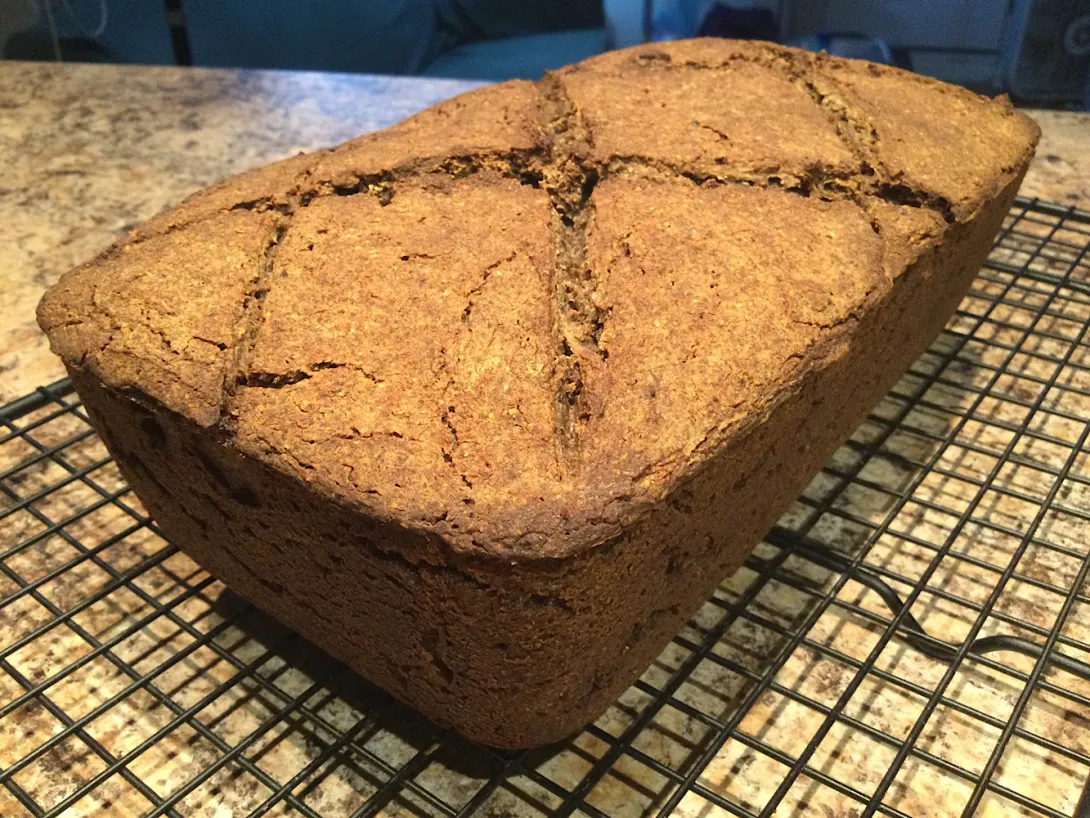
The following day around lunch hour I sliced through the loaf. As per usual, I sat and watched the sliced end as the crumb recovered from the knife, and the aerated holes all opened up again. Heavy loaf? Yes. Brick, no!
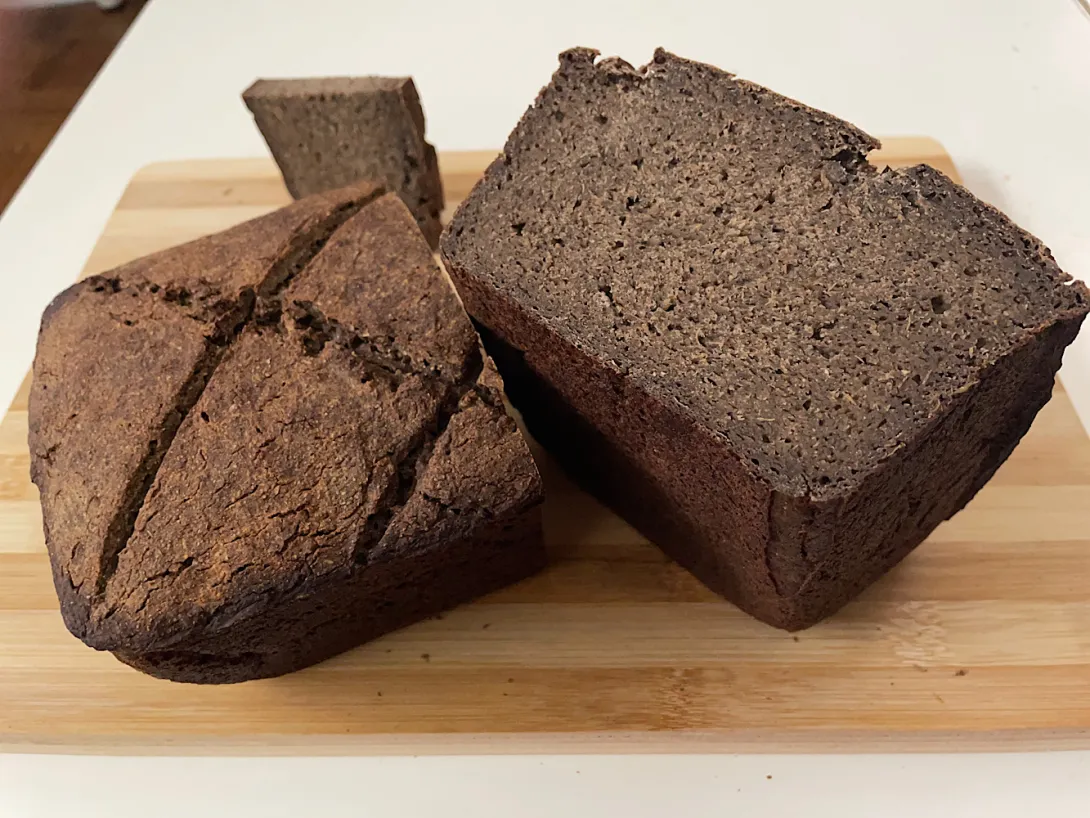
Taste, Texture and Reflections
The bread holds together nicely in a slice, or if you break a piece off a slice. It's not gummy. It has a nice firm but soft chew. There is a bit of a soft graininess or granulariy to the crumb I guess but nothing unpleasant.
The flavour really surprised me. It was like a light citrus, like a freshly-squeezed orange juice. Some zing but no edge. With more testing, the flavour bounced around between the citrus and an almost nippy cheese. But nothing really sour.
I expect this is the sour from lactobacillus from the sourdough interacting with the umami black sesame and solod and tempered by sweet honey.
This was a really unexpected result and it was a lot of fun due to expecting failure, nudging it along, and seeing what came out.
I have no idea where to go from here. I suppose I could increase the black sesame. I also expect a properly fed starter/sour would be different but I dunno.
- happycat's Blog
- Log in or register to post comments
Hi Happycat,
Nice recovery from the purchase error! I'm of the opinion that if it's not a brick and tastes great, you 'it's all good'.
Tony
Ha, you are so right, Tony. It's also a good way to develop an adaptive approach to baking and avoid rigid perfectionism :)
--David.
You are so adaptable David. I’d say that loaf was quite the success and is probably one of the first Borodinsky made from buckwheat. I still haven’t tried anything buckwheat except for soba noodles which I like. I have a bag of buckwheat sitting in my closet and I’ll have to investigate how to use it in the near future. I don’t think I’ll be doing a Borodinsky anytime soon with it though.
Benny
Thanks Benny. Toasted buckwheat makes a nice flavour enhancer for bakes, including pancakes and English muffins (i.e. 10-15% works for me)
Soba noodles are great for sure. I've only made them once, but have certainly enjoyed them many times. My wife got her first career started making soba noodles at a restaurant in Japan where that was their entire focus. You'd think I'd have asked her how to make them but we don't seem to do anything logically :)
Fascinating idea David, and you're way ahead of the curve with a buckwheat Borodinsky! Looks a darn site better than some of my gluten free attempts as well!
-Jon
Thanks Jon. I sliced it thin and froze it. I had some for toast today. Tasted good to me. I wonder if it would qualify as a gluten-free bread? It's certainly a different experience than fluffy breads but I think it's on par with whole ryes.
I'm not sure I would have tried that but I’m glad that you did. Buckwheat isn’t one of my favorite flours, although I have used it in conjunction with others. Thanks for showing us that it can function as a loaf, not just as pancakes and noodles.
Paul
Thanks. It was interesting to think in terms of recipes already designed for kinds of grain issues (e.g. rye's characteristics) and sub in a grain with similar issues vs. trying to tweak a "normal" recipe with challenging grains.
Toasting buckwheat enhances the flavour a lot (subjectively) so that might've been interesting to do with the flour used in the scald.
I have only ever used buckwheat as a small percentage to other doughs, so this was quite an interesting read. It looks a lot like that dense, dark brown bread I've had in Germany before (which makes excellent pb&j open face sandwiches btw ;-). I've definitely made similar purchasing mistakes...glad you found an inspiring way to incorporate yours into something interesting.
Thanks. Yup it's dense bread but still aerated and works well toasted.
pb&j on this... wow. never would've thought of that. I do have some tahini and homemade jam. Might give it a whirl.
I really didn't expect to like it... but tahini and homemade jam (a low sugar tangelo jam I made that is a bit edgy/pithy on its own) seemed to work well with the bread even though the bread had its own sour.
Thanks for this suggestion.
I suppose it makes sense as I used black sesame in the bread and it already had a citrus tang. Cool experience.
Tangelo jam and tahini sounds delightful! Glad you liked it!
I'm inspired by all the cool flavour/aroma notes you're getting from these processes.
ta
f